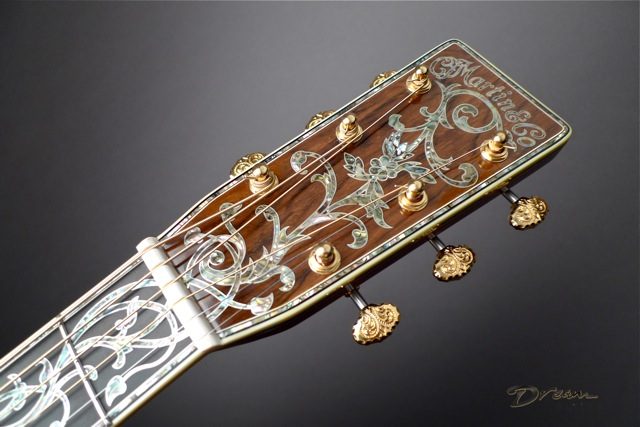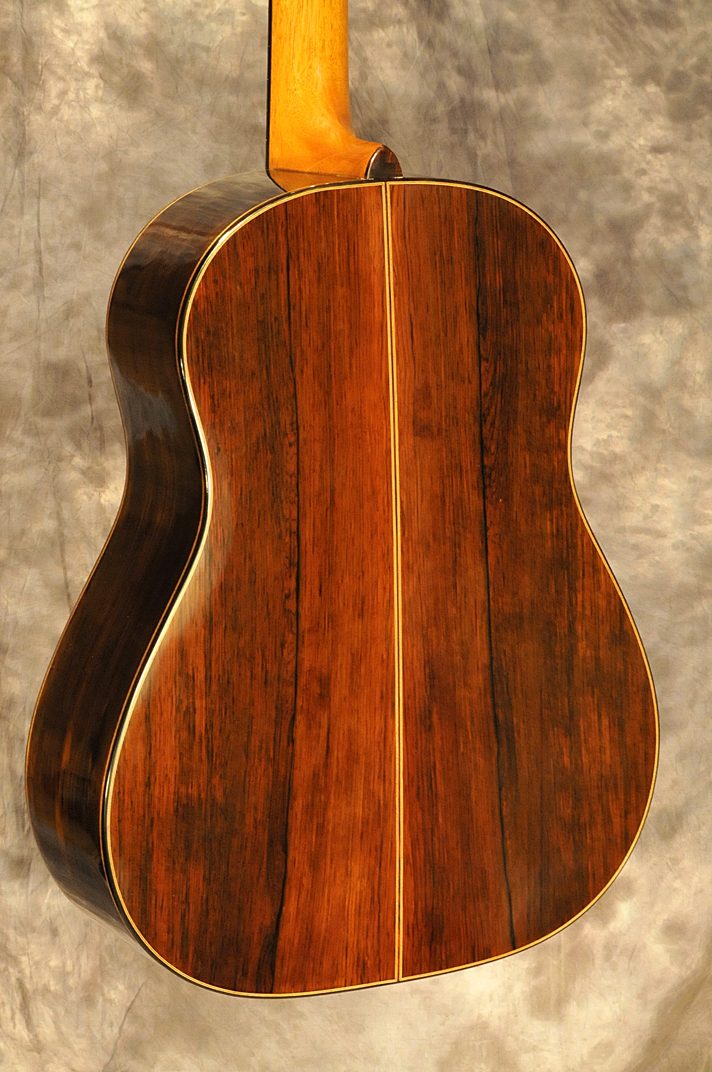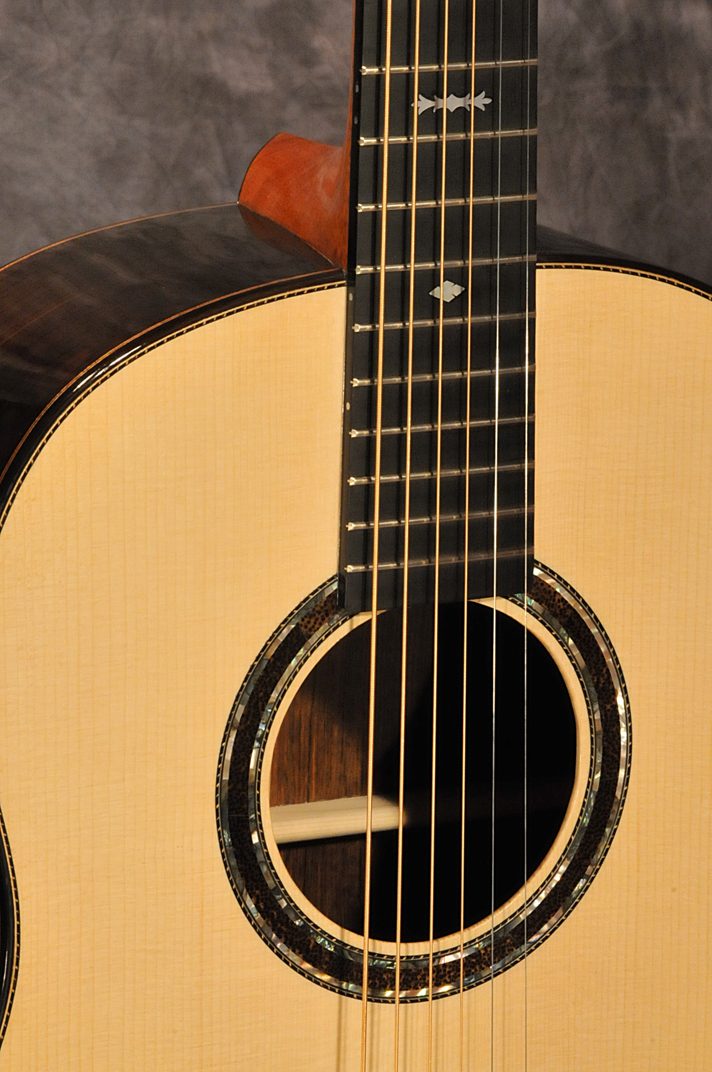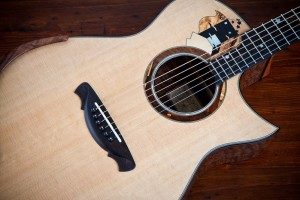By Nigel Forster – Luthier

Instrument design involves shifting your attention. You shift it from subject to subject. Hopefully you remain on a topic long enough to think up an improvement or a refinement. You pick a topic, you examine, you contemplate, you experiment, you reflect, you move on.
I spent quite some part of 2009 studying, understanding and working on intonation. Its one of those “bottomless” subjects. Its a huge subject. To some extent it’s one of those doors you open only to wish you’d left it shut.
You realize that intonation is all one big compromise, that no matter what you do, choices have to be made which by improving something means making something else worse. You learn that even the ideals:Just intonation, Meantone and Equal temperaments are all compromises.
You also realize that you don’t have to actually understand intonation very well to make, play or enjoy guitars. Then you also realize that very few guitar makers or players understand it either.
You also make the discover that the type of instruments you make has an effect on how critical your instrument should be intonated. That in turn helps you see why so few makers either understand the subject or even want to understand the subject.
But what (if you’re a maker like me) do you do when you have a customer who is obsessed with intonation?
You either decide to learn about intonation or you ignore the customer.
Ive a friend and customer called Ian. He’s obsessed with intonation. It drives him nuts. In turn he drives me nuts. This had to stop. So, I decided to look into the issue a little deeper than I had in the past.
Ian now wanted the guitar to be as close to Equal temperament as possible as in the current crop of bands he played with he had to play in a lot of different and sometimes just plain odd keys. I mean, who plays in F#?
Ian does.
————————————————————————————————
Here is a brief rundown of my learning
“Perfect” intonation is impossible to achieve.
The luthier (and the customer) must be willing to accept some degree of approximation.
“But my old (insert the name of a guitar you’ve played/owned) plays perfectly in tune all up and down the neck”
I’m sorry to be the bearer of bad news, but…
it doesn’t,
it didn’t,
and it never will.
It’s not possible,
it never has been
and never will be.
What is possible are a couple of things: the instrument may have lacked the power and clarity that show up the many intonation errors which are inherent in all guitars. This is very common with guitars that follow the traditional American steel string design. (Think Martin.) Then there are our ears and our discernment of tuning which varies greatly. Some folk are blessed/cursed with perfect pitch. Such people really struggle with guitars. All guitars. Some folk can’t hear when its out of tune. They’re the lucky ones.
The ideal for many would be to have a guitar that plays in just temperament or just intonation (JI).
This is when chords sound in tune with themselves; the intervals are in tune with the bass string overtones and is what many players try to achieve by tuning the guitar to a chord. This is because it sounds nice. It sounds correct. But as soon as we change to a different chord shape on a guitar that has an equal temperament fretboard we expose the fact that the nice-sounding intervals are at the expense of others. The only way the JI can be sustained is for the player to tune the guitar so one chord (like an open E chord) “sings”, use only that one chord shape and slide it up and down the neck.
The next best thing to JI is “meantone” temperament.
This is where some chords and keys are close to JI, but at the expense of other chords and keys which will be far worse. The groups of keys that work in the meantone scales I’ve come across are don’t work all the keys we want to use. Eg: E, A, C, G, F. And the corresponding minors.
Many luthiers have tried before.
Over the last few hundred years makers have tried all sorts to achieve JI or meantone scales:removable frets, semi frets, guitars with multiple and removable fretboards, more than 12 tones per octave and, more recently, wiggly frets. But still the results, even if executed well will give us a compromised result: some keys will be good but only at the expense of others.
So what do we do?
So if we are to play in more than one key a different compromise is required. The equal-tempered scale used today is in fact one of several options available (I discovered an online library of over 3,500 different temperaments!) but it is probably the only scale of any use if we expect to play reasonably in tune in several keys. This particular division of tones is now generally accepted, even though the only intervals that are in tune are the octaves; all other notes are actually sharp or flat of just temperament). The fifths are pretty close to JI but the thirds are all noticeably sharp (by around 14 cents) so this universally accepted compromise has flaws even if executed with precision.
Thanks to the nature of the guitar there are more obstacles to overcome – the act of fretting causes a string to stretch. In stretching, the pitch is raised by different amounts according to the distance the string has to travel, and how much further it is stretched once fretted. Add to this a rather complicated problem called inharmonicity, which relates to the inherent stiffness of steel strings. This stiffness means the higher overtones of the note sound sharper than the fundamental of the note being played. This is especially true of lower notes.
Further complications can be caused by string inconsistencies and/or the appropriateness of the string gauges used. Excessive neck relief, built in to allow for the vibration of the strings, can also compromise intonation. Its not easy. There is a lot to be said for making “warm” sounding guitars, as they mask so many of these issues. No wonder they’re so popular.
But what if we want to make great sounding guitars?
The long and short of it is the maker must change how they intonate. Learning to do so is a lengthy process involving measuring and adjusting the value of every note fretted and then calculating the position of both the saddle and the zero fret according to the string gauges used and tuning employed.
Complicated.
It involves a combination of a compensated saddle, something we are all pretty familiar with, and a compensated “wiggly” zero fret or nut.
The amount of compensation depends on the scale and the preference of string type and tunings to be employed. It is a laborious process but worthwhile.

I’ve managed it, and so have a few other luthiers. Does it really make a difference?
Well, that depends, it gies back to what was said earlier about the type of instrument we make and the players discernment, but yes, it does make a difference, and it is the only way to achieve equal temperament (itself a compromise) on clear and powerful sounding guitars.
So what are the benefits?
- You get to play equally out of tune in every key!
- You stop noticing intonation.
- You can forget about it, and remain with your music.
And that, as far as intonation and guitars goes, is about as good as it can get….
About the writer
Nigel Forster began guitar making in 1988 as an apprentice to well regarded English luthier Stefan Sobell. He worked for Sobell 1988-1990 and 1992-2003. He opened his own workshop in late 2004 making acoustic guitars, mandolin, cittern and celtic bouzouki and a revolutionary new design of archtop jazz guitars.
www.nkforsterguitars.com
For his acoustic guitars, and Celtic family instruments, Dream Guitars are Nigel’s exclusive USA dealers.
As well as making instruments, Nigel now spends part of each year away from the bench, on retreat, traveling, writing and volunteering. As a result the number of instruments he makes is now reduced compared to previous years.
Getting on the waiting list isn’t as easy as it used to be…
His first print book, a book about instrument design and a collaboration with photographer Dave Best is available:
http://www.ypdbooks.com/photography/366-between-the-ideal-and-the-possible-YPD00333.html
Standard Amazon shipping rates apply and appear at the end of the checkout process.



























































































































